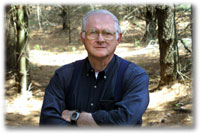The big corn combines are mostly silent now, the corn crop harvested. How different harvesting corn when I was growing up. Then, we cut the standing corn with a corn binder pulled by a team or horses. Once cut, my dad, brothers and I stood the corn bundles into corn shocks that marched across the cornfield like so many Indian tepees.
After a few weeks, a corn shredder arrived at the farm, a smaller version of a threshing machine. The corn shredder (perhaps better called a corn husker) removed the ears of corn from the stalks and cut up the stalks that were blown into our barn for later use as bedding for our cows. The yellow ears of husked corn tumbled into a wagon. When the wagon was full, we forked the cobs into the corn crib.
Corn shredding involved several of the neighbors, just as did threshing. It took a couple of weeks for the corn shredder to make the rounds of the neighbors, tending to each farmer’s corn crop, and leaving the corn fields with rows of corn stubble. With good fall weather, the naked corn fields were plowed down in preparation for the following year’s oat crop. No successive crops of corn on the same field which is often the case today.
The corn combine has made the process of corn harvesting considerably easier—but I miss seeing the corn shocks, true symbols of fall. (Travel in Amish country and you can still see them).
THE OLD TIMER SAYS: Better to remain silent and thought a fool than to open your mouth and remove all doubt.
UPCOMING EVENTS:
November 16, 7:00 p.m. Reedsburg Library, Cranberry Red
December 2, 7:00 p.m. McMillan Memorial Library, Wisconsin Rapids, Cranberry Red.
December 4, 10:30-2:30. Dregne’s Scandinavian Gifts, Westby. Book signing for Barns of Wisconsin, Horse Drawn Days, and Cranberry Red.
December 9, 7:00 p.m. Stoughton Library.
December 11, 10 to 2:00 p.m. Fireside Books, West Bend.
Friday, November 12, 2010
Subscribe to:
Post Comments (Atom)

No comments:
Post a Comment